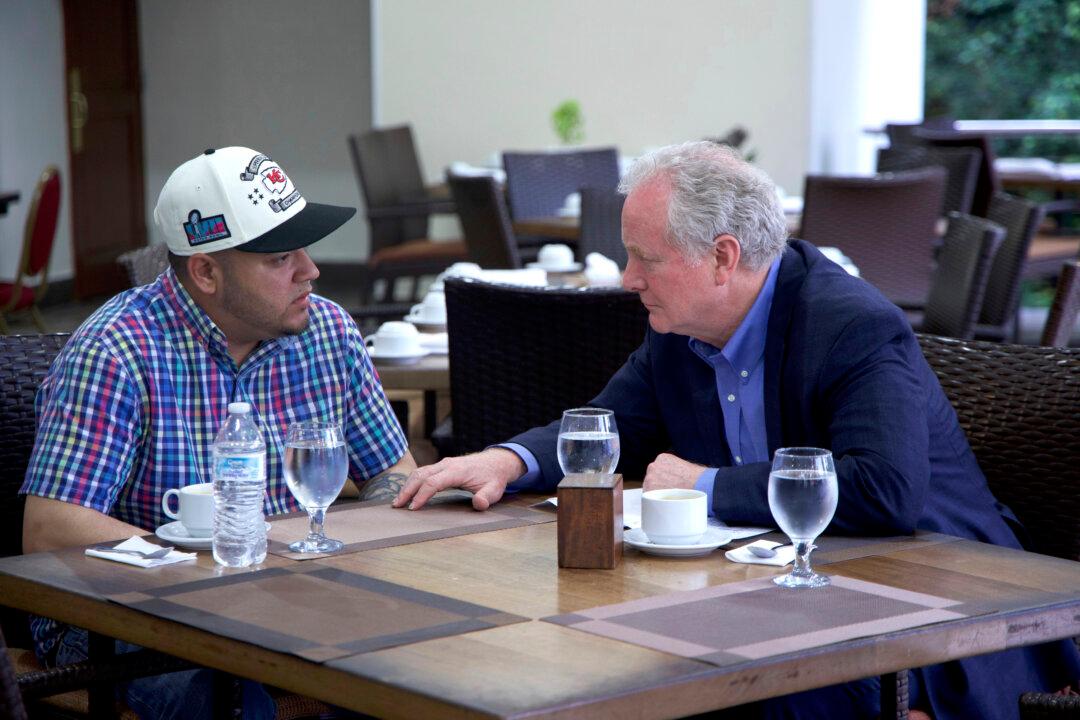With just 30 days left before Election Day, Vice President Kamala Harris and former President Donald Trump are hitting overdrive in the final sprint. Mail-in ballots are being printed and sent out, and early in-person voting has already kicked off in a handful of states.
There’s a lot at stake for both campaigns in what has been one of the most unprecedented general elections in modern history, with two assassination attempts on Trump, a shakeup at the top of the Democratic ticket, and a cascade of polling that shows both candidates locked in a dead-heat race for the White House.
In the few remaining weeks of this election cycle, both campaigns are spending money on advertising in battleground states, and hoping that their respective ground strategies will boost voter turnout and help them cross the finish line.
The metrics that will swing the vote in either direction in the final 30 days vary.
“The things that we can count involve campaign spending. It involves donations. It involves things like opening up field offices,” Jacob Neiheisel, a political science professor at the University of Buffalo, told The Epoch Times. “So all of those things that are observable to us are, often, the things that we focus on. ... They’re parts of the broader environment that matters.”
It is unclear which campaign has the most advantages in the remaining four weeks.
“I think it’s probably pretty close to a toss-up. It could definitely go either way,” Anthony Fowler, a professor at the University of Chicago’s Harris School of Public Policy, told The Epoch Times.
He explained that despite how greatly Harris and Trump contrast ideologically, much of the electorate is ideologically moderate, and likely to fall “roughly in between the two of them.”
“So it kind of makes sense to me that there’s a big group of people who, even though maybe they don’t really like either candidate very much, they’re almost indifferent between them, and haven’t quite decided which one they’re going to support,” he said.
Polling Data
Recent polling data suggests that the race between the two candidates remains razor-thin. While Harris leads by 2.7 percent in FiveThirtyEight’s polling average, surveys in the seven battleground states paint a different picture.Among the formerly “blue wall” states of Michigan, Wisconsin, and Pennsylvania, recent polls have Harris leading by between 1 and 5 percent, trailing Trump, or tied.
Throughout the Sun Belt, Harris has led multiple September polls, but others show Trump leading by 1 percent or more.
“I think that absolutely, polling is really hard nowadays,” Daniel Hopkins, a political science professor at the University of Pennsylvania, told The Epoch Times.
“It is [challenging] to get representative samples in an era when sometimes fewer than 1 percent of the people that you try to talk to are actually willing to talk to you and tell you [which candidate they support].”
Trump was historically underestimated in polls leading up to the 2016 and 2020 elections, but Hopkins says polling errors could go in either direction this time around.
Fowler agrees.
“[Polling] could, in principle, go either way,” he said. “With Harris, she’s a little bit less of a known commodity. And so there probably are some voters who are still trying to decide how much they do or don’t like Kamala Harris ... depending on how the last month of the campaign goes, her popularity could go up or down.”
However, Fowler cautions that Trump could still outperform the polls again, as non-college graduates historically respond to polls less frequently than college graduates, who tend to lean toward Democrats.
For some in the polling industry, Trump’s overperformance relative to past polls is complicated. There’s the “shy Trump voter” theory, which suggests many of those who supported him in 2016 and 2020 were not just less likely to speak with pollsters, but also less likely to be forthcoming with their preference.
“So in 2016, I would say it’s very fair to suggest that pollsters, by and large, undercounted that shy Trump vote. I think that was a real phenomenon,” Jim Lee, president and CEO of Susquehanna Polling, told The Epoch Times.
Lee said that Susquehanna’s last 2016 Pennsylvania poll had former Secretary of State Hillary Clinton up by two points before she lost the state by 1 percent, within the margin of error.
Eight years later, he sees a different equation.
“I don’t think Trump voters are shy about saying they’re Trump voters now, and Trump is basically not running the 2016 campaign again today, where he’s telling people, don’t listen to the polls,” Lee said.
Turnout
One of the biggest unknowns about this election that will affect the winner is turnout.She managed to get registered Democrats to support her by a 94 percent to 5 percent margin, while Trump won over Republicans by 92 percent to 4 percent. However, voters who identified as “mostly conservative” favored Trump by 87 percent to 7 percent, while “mostly liberal” voters backed Clinton by 78 percent to 13 percent.
Political experts told The Epoch Times that before Trump’s rise in 2016, lower turnout usually favored Republican presidential candidates.
“Pre-2016, the conventional wisdom would have been higher turnout ... is usually good for the Democratic Party,” Fowler said, explaining that working class voters previously leaned toward Democrats and historically voted less frequently.
In the current election cycle, it’s not clear which party would benefit most from high or low turnout on either side. Fowler says that many of the working class voters who backed President Barack Obama in 2012 pulled the lever for Trump in 2016.
“It could go either way, and it’s not obvious that the higher turnout is actually better for the Democratic Party this year,” he said.
Ad Spending
For the final sprint between Oct. 4 and Nov. 5, Democrats have reserved $301 million for advertisements compared to $184 million from Republicans, according to the advertising analysis firm AdImpact. Biden spent $839.1 million on media through the entire 2020 election cycle, and Trump spent $544.6 million.This year, especially the final 30 days of the election cycle, poses a significant challenge to Harris as she is not nearly as well known to many voters as either Clinton or Biden were in their respective elections. The money reserved for Harris’s race in the final four weeks is nearly equal to Clinton’s media budget for the entire 2016 election cycle.
Before Trump’s 2016 win, not getting outspent was a good way to win a presidential election, Neihesel said.
Ground Game
Clinton reportedly opened more than three times as many campaign offices in critical states as Trump in 2016. Trump touted the small team that launched him to the top of the GOP ticket that year and opted for a similar strategy ahead of the general election. Despite the ground advantage on her opponent, Clinton still lost.“[Trump] was behind when it came to things like field offices opening up and still again, managed to win in ‘16 and make it again another very, very close race in 2020,” Neiheisel said.
This year, Trump has embraced a new strategy, reportedly opening more than 300 offices throughout the battleground states with more than 27,000 trained “Trump Force 47 Captains” as staff members.
Harris, by contrast, has roughly 238 offices throughout the battlegrounds, with approximately 1,750 paid staff members in those locations. The rest of her field team is focused on the ground, working to build enthusiasm among the Democratic base and any remaining undecided voters.
Looking Forward
With just 30 days left before Election Day, Harris is seemingly more vulnerable on the path to triumph.“Right now, some of the disadvantages that Harris would have are just the inability to answer the question, ‘Are you better off now than you were four years ago?’” Neiheisel said, calling it her chief liability.
“It’s certainly not in terms of resources. She seems to have made up quite a bit of ground on that in a hurry, given that she started her campaign fairly late,” he said. “The flip side there is that she’s probably better resourced right now than the Trump campaign. Whether that matters, I don’t know.”
Much has been said about the potential for “October surprises,” which are sudden news events in the weeks leading up to Election Day that can alter the public’s perception of the race. Eleven days before the 2016 election, FBI Director James Comey announced that the agency had discovered new emails in its investigation into Clinton’s email server.
“It’s easier to imagine something that could really hurt Harris more so than something that could hurt Trump,” Fowler said. Trump has survived multiple scandals in the past, including the release of the Access Hollywood tape in 2016. A corruption scandal in the Biden administration “could end up hurting Harris,” Fowler said.
Even so, Harris will likely emphasize the recently released new version of special counsel Jack Smith’s indictment of Trump in Washington, regarding his alleged actions after the 2020 election. It was the focus of her campaign rally with former GOP congresswoman Liz Cheney in Wisconsin on Oct. 3.
Many independent voters, Neiheisel said, are affected by “whatever information environment exists ... around two weeks out” from Election Day.
There’s also the question of undecided voters. In many battleground state polls, the 5 percent to 15 percent of undecided voters will likely decide the winner.
Traditionally, those voters would likely back the “challenger candidate,” Neiheisel said, but since Harris is trying to brand Trump as an incumbent, despite her own incumbency, it’s not clear who these voters will see as the true challenger.
Lee agrees, and said she has “flipped the narrative” to present herself as the “fresh face.”
“I don’t really believe there’s many people that are undecided right now. I think they secretly know who they’re voting for, and my guess is they’re going to break more for Harris than Trump,” Lee said.
As to how either campaign moves the needle in the last 30 days to claim victory, Fowler suggests focusing on issues that will appeal to those in the middle.
“My advice for either campaign would be pretty similar, which is [to] focus on the important bread and butter issues people care about, and try to take moderate, reasonable positions that convey competence,” he said.







